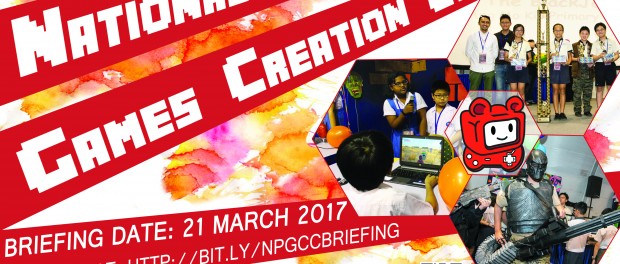How much is 1 byte, kilobyte, megabyte, gigabyte, etc.?

Updated: 04/26/2017 by Computer Hope
Below is a list of each of the accepted disk drive space values. It is important to realize that not all manufacturers and developers list their value using binary, which is base 2. For example, a manufacturer may list a product's capacity as one gigabyte (1,000,000,000 bytes, a metric value) and not 1,073,741,824 bytes (gibibyte) that it actually is. For this page, we are using the "common names" and listing all values in base 2.
Note: All values are listed as whole numbers, which means a GB shows it can only contain one 650 MB CD. Technically, 1 GB could hold 1.5753 CDs worth of data, but this document isn't meant to show you how many "parts" of an object a value can hold. Therefore, we are omitting decimal values. More plainly, you can only fit one complete 650 MB CD on a 1 GB drive since two full 650 MB discs exceed 1 GB.
Tip: With the exception of a bit and a nibble, all values explained below are in bytes and not bits. For example, a kilobyte (KB) is different than a Kilobit (Kb). When referring to storage, bytes are used whereas data transmission speeds are measured in bits.
Bit
 A bit is a value of either a 1 or 0 (on or off).
A bit is a value of either a 1 or 0 (on or off).
Nibble
A Nibble is 4 bits.
Byte
Today, a Byte is 8 bits.
- 1 character, e.g. "a", is one byte.
Kilobyte (KB)
A Kilobyte is 1,024 bytes.
- 2 or 3 paragraphs of text.
Megabyte (MB)
A Megabyte is 1,048,576 bytes or 1,024 Kilobytes
- 873 pages of plaintext (1,200 characters)
- 4 books (200 pages or 240,000 characters)
Gigabyte (GB)
A Gigabyte is 1,073,741,824 (230) bytes. 1,024 Megabytes, or 1,048,576 Kilobytes.
- 894,784 pages of plaintext (1,200 characters)
- 4,473 books (200 pages or 240,000 characters)
- 640 web pages (with 1.6 MB average file size)
- 341 digital pictures (with 3 MB average file size)
- 256 MP3 audio files (with 4 MB average file size)
- 1 650 MB CD
Terabyte (TB)
A Terabyte is 1,099,511,627,776 (240) bytes, 1,024 Gigabytes, or 1,048,576 Megabytes.
- 916,259,689 pages of plaintext (1,200 characters)
- 4,581,298 books (200 pages or 240,000 characters)
- 655,360 web pages (with 1.6 MB average file size)
- 349,525 digital pictures (with 3 MB average file size)
- 262,144 MP3 audio files (with 4 MB average file size)
- 1,613 650 MB CD's
- 233 4.38 GB DVD's
- 40 25 GB Blu-ray discs
Petabyte (PB)
A Petabyte is 1,125,899,906,842,624 (250) bytes, 1,024 Terabytes, 1,048,576 Gigabytes, or 1,073,741,824 Megabytes.
- 938,249,922,368 pages of plaintext (1,200 characters)
- 4,691,249,611 books (200 pages or 240,000 characters)
- 671,088,640 web pages (with 1.6 MB average file size)
- 357,913,941 digital pictures (with 3 MB average file size)
- 268,435,456 MP3 audio files (with 4 MB average file size)
- 1,651,910 650 MB CD's
- 239,400 4.38 GB DVD's
- 41,943 25 GB Blu-ray discs
Exabyte (EB)
An Exabyte is 1,152,921,504,606,846,976 (260) bytes, 1,024 Petabytes, 1,048,576 Terabytes, 1,073,741,824 Gigabytes, or 1,099,511,627,776 Megabytes.
- 960,767,920,505,705 pages of plaintext (1,200 characters)
- 4,803,839,602,528 books (200 pages or 240,000 characters)
- 687,194,767,360 web pages (with 1.6 MB average file size)
- 366,503,875,925 digital pictures (with 3 MB average file size)
- 274,877,906,944 MP3 audio files (with 4 MB average file size)
- 1,691,556,350 650 MB CD's
- 245,146,535 4.38 GB DVD's
- 42,949,672 25 GB Blu-ray discs
Zettabyte (ZB)
A Zettabyte is 1,180,591,620,717,411,303,424 (270) bytes, 1,024 Exabytes, 1,048,576 Petabytes, 1,073,741,824 Terabytes, 1,099,511,627,776 Gigabytes, or 1,125,899,910,000,000 Megabytes.
- 983,826,350,597,842,752 pages of plaintext (1,200 characters)
- 4,919,131,752,989,213 books (200 pages or 240,000 characters)
- 703,687,443,750,000 web pages (with 1.6 MB average file size)
- 375,299,970,000,000 digital pictures (with 3 MB average file size)
- 281,474,977,500,000 MP3 audio files (with 4 MB average file size)
- 1,732,153,707,691 650 MB CD's
- 251,030,052,003 4.38 GB DVD's
- 43,980,465,111 25 GB Blu-ray discs
Yottabyte (YB)
A Yottabyte is 1,208,925,819,614,629,174,706,176 (280) bytes, 1,024 Zettabytes, 1,048,576 Exabytes, 1,073,741,824 Petabytes, 1,099,511,627,776 Terabytes, 1,125,899,910,000,000 Gigabytes, or 1,152,921,500,000,000,000 Megabytes.
- 1,007,438,183,012,190,978,921 pages of plaintext (1,200 characters)
- 5,037,190,915,060,954,894 books (200 pages or 240,000 characters)
- 720,575,937,500,000,000 web pages (with 1.6 MB average file size)
- 384,307,166,666,666,666 digital pictures (with 3 MB average file size)
- 288,230,375,000,000,000 MP3 audio files (with 4 MB average file size)
- 1,773,725,384,615,384 650 MB CD's
- 257,054,773,251,740 4.38 GB DVD's
- 45,035,996,273,704 25 GB Blu-ray discs
Is there anything bigger than a Yottabyte?
As of 2015, there are no approved standard sizes for anything bigger than a Yottabyte. However, the two standards that have been proposed are the Hellabyte or Brontobyte.
How are you calculating the above values?
Calculating the above values is simple once you know the values of each of the above sizes. For example, in the Gigabyte section above, we know that 1 gigabyte is equal to 1,024 Megabytes. Therefore to determine how many 4 MB MP3 files are in a Gigabyte, we take 1,024 / 4 which equals 256 or 256 4 MB MP3 files in one gigabyte.
Tip: You can also use our search engine to search engine and our conversion tool also to convert and compare between values.
Additional information
- How many MP3's or photos can I put on my flash drive?
- How many pictures can I store on a CD or DVD?
- See the measurement definition for further information and related links to all measurements related to computers.
- How can I learn more about computers?










